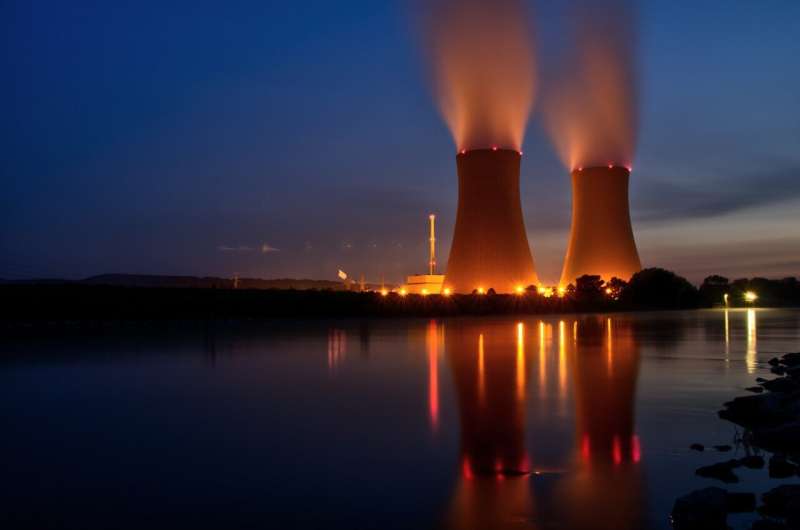
Recent collaborations between technology firms and energy providers are challenging long-held beliefs about nuclear energy.
Last year, Meta, the parent company of Facebook, issued a request for nuclear energy proposals. Google signed an agreement to purchase advanced reactors from Kairos Power, while Amazon joined forces with Energy Northwest to explore new nuclear tech and partnered with Dominion Energy for development initiatives. Microsoft also secured a long-term deal to revitalize Unit 1 of the Three Mile Island.
At the heart of these collaborations is the substantial energy needs of artificial intelligence. For instance, a single Google search consumes as much energy as running a light bulb for 17 seconds. In comparison, asking a question to a generative AI like ChatGPT can require energy equivalent to keeping that light on for 20 minutes.
Generating an image through AI can consume around 6,250 times more energy, comparable to charging a smartphone fully, or enough to power the same bulb for 87 consecutive days.
The millions of people now using AI effectively add the power demand of countless new households. This increasing appetite for energy poses a challenge, as few energy sources can efficiently support such high levels of consumption.
The grid wasn’t prepared for AI
AI systems require huge computational power operating continuously, which is often found in energy-hungry data centers.
Renewable sources like solar and wind generate energy sporadically, failing to provide the steady supply these facilities need. These data hubs must remain operational 24/7, even when weather conditions are not favorable.
While fossil fuels can deliver continuous power, they come with environmental drawbacks and price volatility, such as the recent surges in gas prices due to geopolitical events. Major tech companies like Google, Amazon, and Microsoft have committed to reducing carbon emissions, making fossil fuels an unsuitable long-term option for them.
This situation has led to a renewed focus on nuclear energy, which offers a constant electricity supply supporting costly data operations while allowing tech firms to maintain their low carbon commitments. Plus, nuclear energy has low fuel costs, enabling better long-term financial planning.
Nevertheless, nuclear energy faces historical challenges that the tech sector might be in a unique position to address.
Is nuclear making a comeback?
Nuclear power has often been dismissed as expensive and slow to develop. The average cost of building a 1.1 gigawatt nuclear facility is around $7.77 billion, but prices can escalate. For instance, the Vogtle Units 3 and 4 in Georgia cost a staggering $36.8 billion combined.
Historically, the high initial costs of nuclear projects made them hard to justify. However, like solar and wind energy, nuclear has comparatively low operation costs once a plant is up and running. The challenge lies in scale; the reactors that tech companies need cannot be built in small increments like solar panels on rooftops.
Yet, given the soaring costs of AI data centers, nuclear energy’s price tag now seems more reasonable. For instance, the first phase of OpenAI and SoftBank’s Stargate AI project is projected to cost $100 billion, which could potentially be powered by a single nuclear facility.
Moreover, constructing nuclear plants often takes a long time, with a typical 1.1 gigawatt reactor taking about 7.5 years in the U.S. and 6.3 years worldwide. These lengthy timelines necessitate confidence in future electricity needs, a challenge traditional utilities often struggle to meet.
To mitigate this issue, tech companies are providing incentives to energy providers by guaranteeing future electricity purchases.
In addition, these companies are either acquiring nuclear firms or locating their data centers next to nuclear plants.
Changing perceptions of nuclear energy
A major challenge for nuclear energy remains its reputation as dangerous and unclean. Per gigawatt-hour, nuclear emits only six metric tons of CO2, while coal emits 970, natural gas 720, and hydropower 24. Even compared to wind and solar, which produce 11 and 53 metric tons of CO2 respectively, nuclear has a smaller carbon footprint.
Nuclear energy is also one of the safest energy sources, causing 820 times fewer deaths than coal, 43 times fewer than hydropower, and on par with wind and solar.
Yet, misunderstandings persist, mainly due to outdated beliefs about nuclear waste and accidents. For example, while fears around nuclear waste are widespread, current storage methods have been used safely for decades, backed by strong scientific evidence.
Additionally, although the Fukushima incident had severe economic implications, no deaths from radiation exposure occurred, according to a United Nations Scientific Committee report.
For years, little has been done to address public fears about nuclear energy; it was deemed unnecessary given the sufficiency of coal, gas, and renewable sources. However, the situation is evolving.
With the rising energy demands of AI, Big Tech is now treating nuclear energy as a green option, and the World Bank is reconsidering its historic ban on nuclear energy financing.
Big Tech’s multimillion-dollar investment in nuclear
The world has faced two key challenges with nuclear energy: despite being one of the safest options, it is often viewed as dangerous and unclean.
The second challenge is that upgrading the power grid demands extensive investment, which has primarily gone into smaller sources like solar or into less clean options like coal and natural gas.
Now, technology companies are making substantial investments, betting they can tackle both nuclear challenges—offering the steady, clean energy required for their AI initiatives.
This unexpected focus on AI might rejuvenate the use of one of the safest, cleanest energy sources available.
If you would like to see similar Tech posts like this, click here & share this article with your friends!
